You’re walking along some bushes in a park, and suddenly see a tiny gray creature skittering into the fallen leaves. At first you might think it’s a rodent, but this frenetic ball of energy is actually a shrew.
While it may appear small and gray, shrews are one of the most voracious mammalian predators on the planet. And they’re abundant and widespread, found on five continents in a variety of habitats. In the United Kingdom, there are an estimated 50 shrews per hectare in woodlands, with a country-wide population of more than 40 million shrews. The northern short-tailed shrew may be the most common mammal of the eastern United States.
Soricidae, the shrew family, contains more than 385 species. Superficially, many of these species look similar, with most having pointy snouts, a streamlined body and a grayish coloration. But they exhibit a diversity of behaviors. Even though they’re common and widespread, few people see them and fewer know their crazy habits and adaptations.
Let’s take a look at just some of the many reasons to marvel at shrews.
-
Life in the Fast Lane
If you’re lucky enough to see a shrew, you’ll notice that it’s moving rapidly, with rapid, jerky movements. This isn’t because you scared it; shrews just live life fast and furious. Your most highly caffeinated, Type A colleague will appear downright slothful compared to a shrew.
While this varies among species, a shrew’s heart rate beats 800 to 1000 times per minute. The Etruscan shrew, the smallest terrestrial mammal on earth, has a heart rate that can reach 1500 beats per minute, more than any other mammal and more even than the hummingbird.
Shrews have been recorded making 12 body movements per second. (Go ahead and try to duplicate this feat). They’re in constant motion, rarely stopping to sleep. They have a high metabolism, which means they have to eat. A lot.
A shrew’s life is a constant search for prey. Many species must eat their body weight’s worth of food each day. (I advise you not to attempt this one). If a shrew doesn’t eat within a few hours, it dies. This constant need for food has led to some truly bizarre and even disturbing adaptations.
-
Watch Those Whiskers
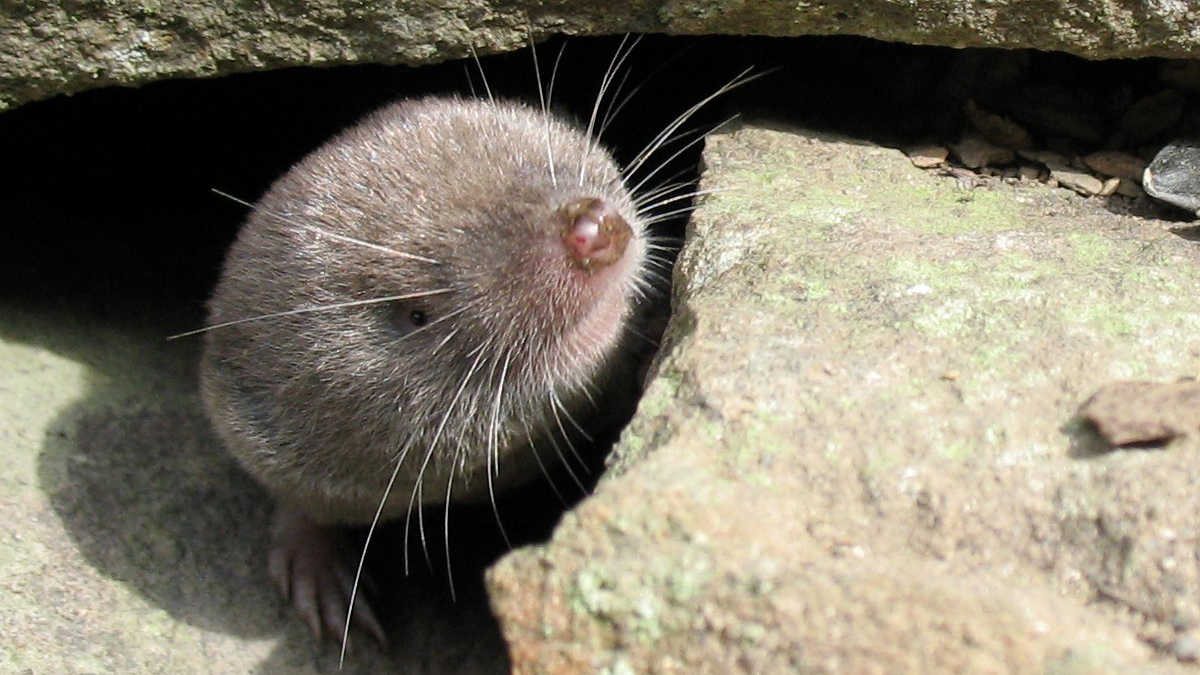
Northern Short-tailed Shrew. Photo © Gilles Gonthier / Flickr Shrews must find and subdue prey fast. They have poor eyesight and often live in thick cover filled with obstacles. How do they manage?
Many sources mention that some shrews use echolocation: they emit sounds producing sonar that helps them navigate their world (much like bats). Shrews emit a sound described as a “twitter” and it is often assumed this is used in echo-location. However, much of the evidence appears anecdotal. An article in the journal Biology Letters found “shrew-like calls can indeed yield echo scenes useful for habitat assessment at close range.”
There isn’t evidence that this echolocation is used to find prey. Instead, shrews rely on their long, highly sensitive whiskers, also known as vibrissae. According to a study published in Philosophical Transactions B, the Etruscan shrew hunts in an environment where crickets are particularly abundant. It moves its whiskers constantly – a motion called, appropriately enough, whisking – until it brushes its prey. Then it strikes quickly and with great precision.
Of course, wasting time attacking non-prey items that the whiskers brush against would burn precious energy. The researchers conducted an intriguing test:
“Experiments with dummy prey objects showed that shrews attacked a plastic replica of a cricket but not other plastic objects of similar size. Altering the shape of crickets by gluing on additional body parts from donor animals revealed that the jumping legs but not the head are key features in prey recognition.”
-
Shrew Venom, A Horror Story
You can spend way too much time on YouTube watching videos of shrews attacking mice, scorpions, snakes and other larger creatures. Spoiler alert: the shrew wins.
This is because many shrew species are venomous. Research has found that an individual shrew stores enough venom to kill 200 mice. Some shrews also use this venom for something called live hoarding.
Live hoarding sounds innocuous enough, but in reality it shares numerous plot points with that terrifying movie Hostel. Here’s how it works.
The shrew lacks hollow fangs (as in venomous snakes) but instead has a gland that allows saliva to flow with the venom. When the shrew encounters its prey – often an invertebrate, but it can also be a mouse or other vertebrate – it begins biting it, allowing the venomous saliva to flow into the wound.
For the prey, this is the beginning of a very bad day. The venom paralyzes the creature, but keeps it very much alive. The shrew can then move it to a cache, available for whenever hunting is not going so great. For an animal that has to eat constantly, this keeps a fresh if unsavory meal always at the ready.
The American Chemical Society reports that a mealworm can be kept, paralyzed but alive, for 15 days.
Shrew bites on humans are reportedly painful but fade in a few days. Be very, very glad these animals are not larger.
-
Following the Herd
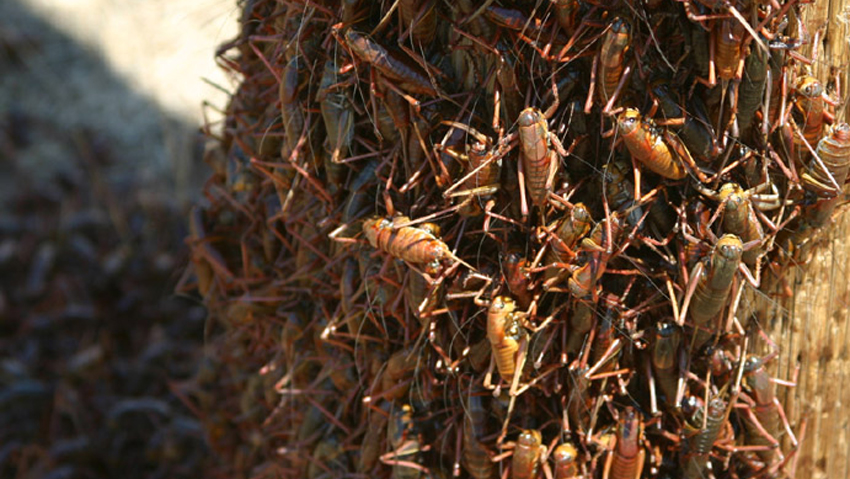
Mormon crickets in Nevada, 2006. Photo © katie madonia / Wikimedia Commons through a CC BY 2.5 license In the sagebrush country of the western United States, one species of shrews may follow the thundering herds … of Mormon crickets. Mormon crickets (actually a species of katydid) are prone to periodically have population explosions resulting in large swarms.
Vladimir Dinets, in the Peterson Field Guide to Finding Mammals, includes this intriguing description: “On arid plains these shrews follow swarms of Mormon crickets the same way Gray Wolves follow migrating Caribou herds. If you encounter a swarm, look for shrews scurrying along its tail edge.”
Dinets’ book, by the way, is like a shrew spotter’s bible, including tips on where and how to seek all the North American species.
-
Walking on Water
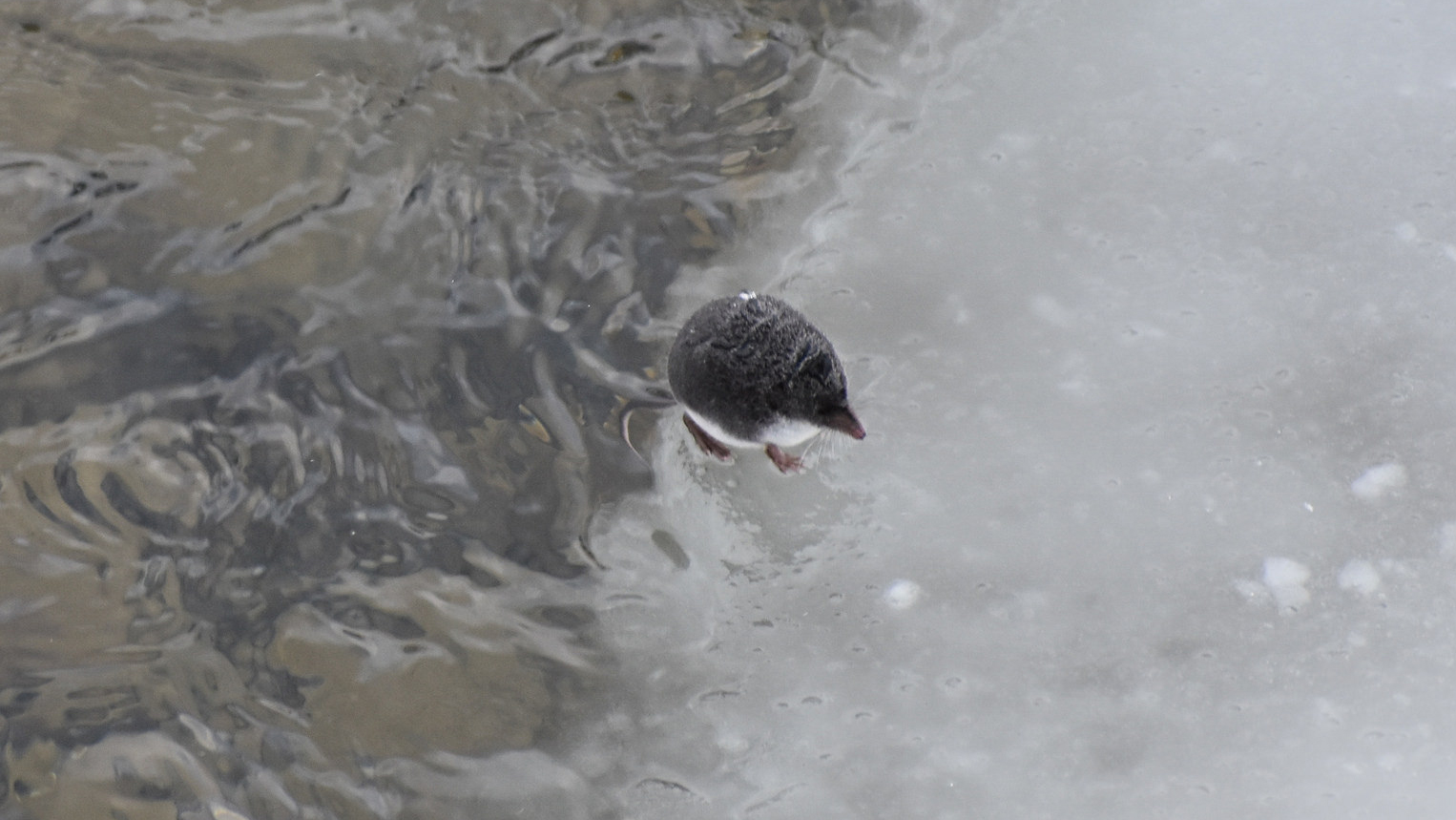
Water shrew on Pebble Creek. © NPS/April Henderson / Flickr You can find a shrew species in just about any habitat. Several species of water shrews even take to streams. The water shrew has stiff hairs on its feet that allow it to scamper across the surface of the water. Its stiff fur also traps air bubbles, allowing it to stay underwater for short bursts. It must stay in constant motion underwater, or it pops back up to the surface. It hunts caddis larvae and other small aquatic prey.
Theodore Roosevelt (yes, the president) observed a water shrew catching a minnow in North Idaho. He described it in his book The Wilderness Hunter: “It was less in size than a mouse, and as it paddled rapidly underneath the water its body seemed flattened like a disk, and was spangled by tiny bubbles, like flecks of silver.”
As a side note, Theodore Roosevelt also kept a shrew in captivity (he fed it a mouse and garter snake) and observed, wrote about and collected shrew species on his lengthy African safari. He even has a shrew species named after him. I’m not surprised that he had a love of shrews, given his accomplishments as a conservationist, naturalist and outdoors enthusiast. I wish for another politician like him nearly every day.
-
The Incredible Shrinking Brain
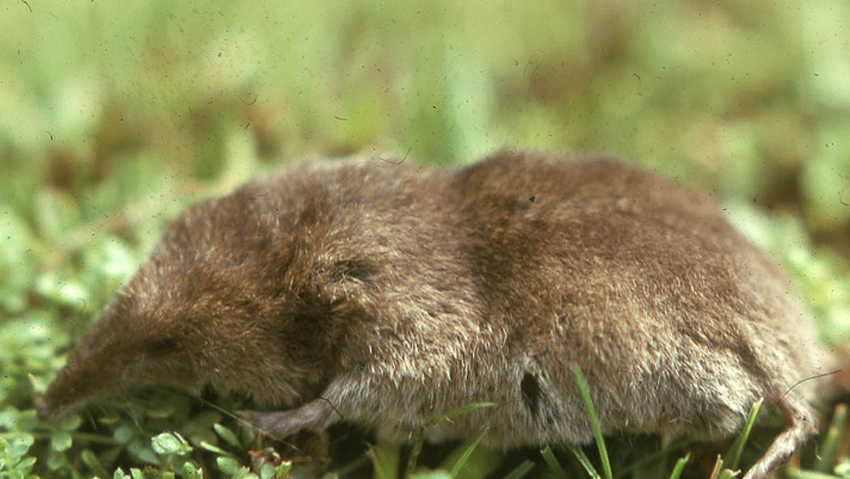
Common shrew (Sorex araneus). Photo © Dr Mary Gillham Archive Project / Flickr through a CC BY 2.0 license Many wildlife species feast and bulk up for the cold winter months. With the shrew’s metabolism, weight gain is not an option. And so at least one shrew species shrinks. A recent study, published in the journal Nature, found that in common shrews in Germany, “Their spines also got shorter, and major organs, including the heart, lungs and spleen, shrank. Even their brain mass dropped by 20–30%.”
Researcher Javier Lazaro hypothesized that “reducing their body mass during winter might increase their chances of survival, because they wouldn’t need so much food.” The brain in particular has high energy requirements, but the study could not determine if shrews experienced decreased cognitive functions.
-
Foxes Hate Them, Trout Love Them
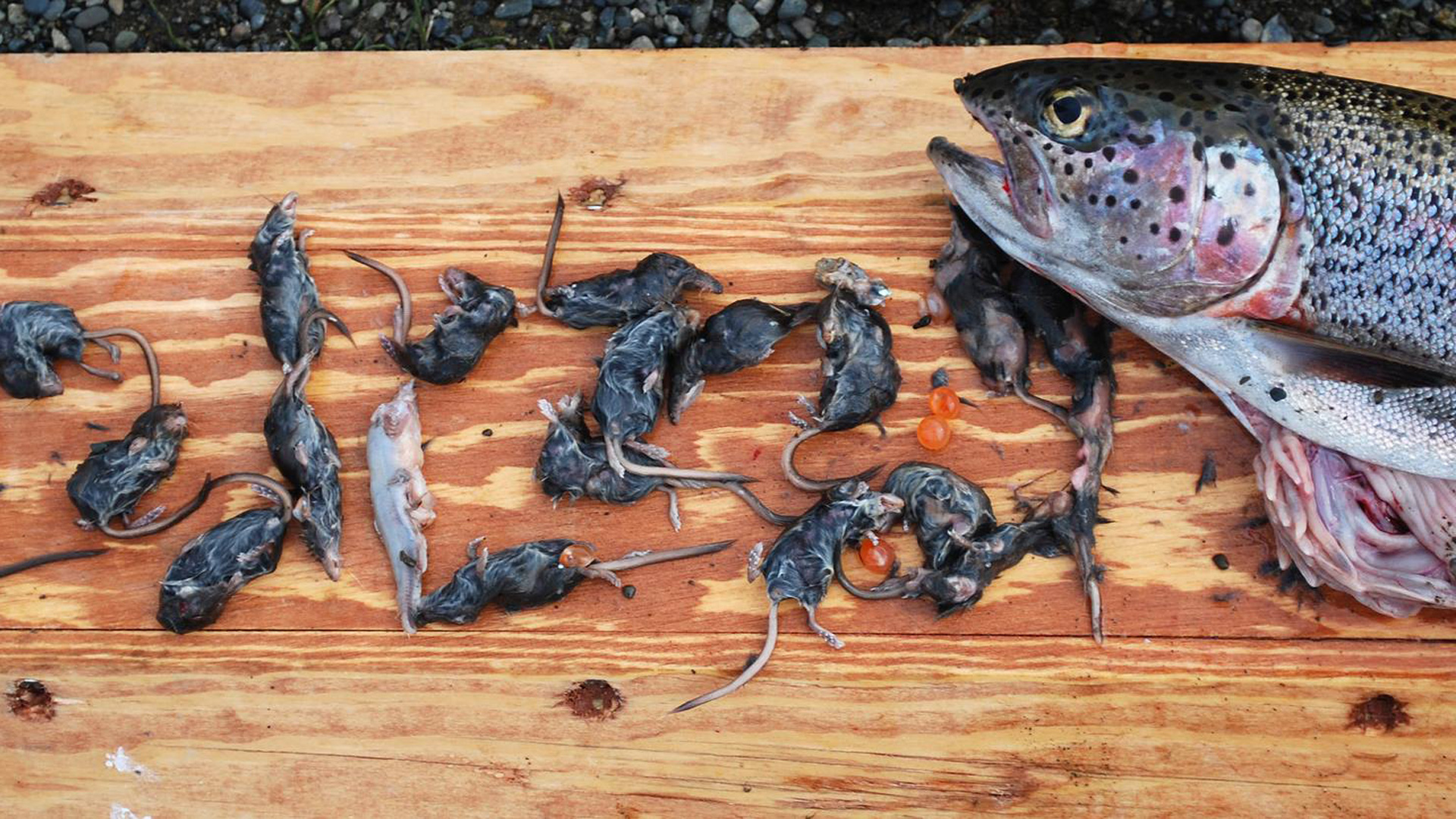
The shrew-eating trout of Togiak National Wildlife Refuge. Photo: U.S. Fish and Wildlife Service. Shrews may be fierce predators, but they’re small, which means they in turn become prey. Many mammalian predators, including red foxes, raccoons and cats, will attack them but rarely actually eat them. That’s because shrews emit an unpleasant musk that some liken to the smell of skunk.
This does not deter other predators, like owls and snakes. But my favorite incidence of shrew predation is a rainbow trout caught at Alaska’s Togiak National Wildlife Refuge that had 19 shrews in its stomach. These were not water shrews, but other species that fell into the water and became prey. You can read the full account in my previous blog.
-
Shakespeare and Shrews

Petruchio (Kevin Black) and Katherina (Emily Jordan) from the 2003 Carmel Shakespeare Festival production at the Forest Theater. Photo © Smatprt / Wikimedia Commons through a CC BY-SA 3.0 license And then there’s the literary work, Shakespeare’s Taming of the Shrew. During my Shakespearean literature class in college, my professor stated that the Bard did not refer to the literal shrew, as such a benign, inconsequential mammal wouldn’t fit the theme of the play.
As a lifelong mammal nerd, this amounted to heresy. I decided to make my final paper for the class a detailed comparison of the real shrew with the literary one. This, in retrospect, was a bit of a gamble. I relied on a store of shrew facts, many of which now appear in this blog.
As I read my professor’s comments on the paper, I could sense that she was initially annoyed at my topic, then became increasingly alarmed as she realized I was quite serious. The paper received an “A”, along with the pointed suggestion that I pursue a career in nature writing as opposed to academia.
And here I am, still sharing shrew facts.
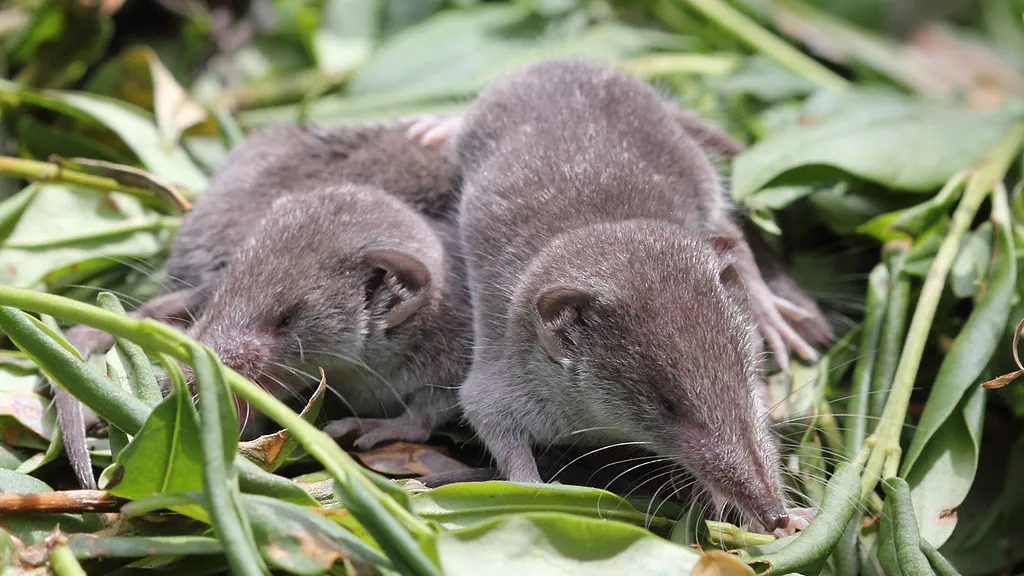



I used to regularly find dead shrews,usually a foot above the water line near ponds after rainstorms,any clue why this happens?
My theory is they get wet and it supercharges there metabolism and there poor little bodies can’t take it?
Great article…fascinating……..ounce for ounce a pretty tough customer……I am guessing their life expectancy is comparatively short.
Amazing creature. Thanks for the article. I learn so much from this site.
Theodore Roosevelt is considered to have been a conservationist, but he was a tremendous persecutor of large predators, notably mountain lions. While I realize that this negative attitude towards large predators was common in Roosevelt’s time, I would certainly prefer politicians who are true conservationists and see the value of all species.
Thanks for your comment. And I understand your point of view. But attitudes and values change, and I’ve never found it fruitful to apply today’s attitudes and values to times past. Even Aldo Leopold persecuted wolves (although he had a change of heart). And I should note that I know several accomplished and eloquent conservationists today who hunt mountain lions.
Regarding Roosevelt, he was critical in establishing national parks, the national wildlife refuge system and so much more. I continue to wish for more like him, every day.
So, that explains why I had so many shrews in my yard the years I had foxes living under my barn. No mice, though. (Wish the foxes would come back, but unfortunately neighbors removed the wooded corridor behind my property.)
I like shrews– interesting creatures- and enjoyed learning some more interesting things about them. Loved the film- both hilarious and a bit frightening! The Teddy Roosevelt quote was very much like something one of my daughters, age 5, said after watching a water shrew go downstream during one of our camping trips. Very observant kid. (She is currently studying for her PhD in biology.)
Glad your teacher steered you toward nature writing, too, but somehow suspect that’s where you were going, anyway. Gift to all of us nature nerds.
Thanks Annie, much appreciate. And yes, by the time that teacher made that suggestion, I was already firmly committed to my desired career path!
Thank you so much for this! I am a conservation biologist working on species at risk in southwest BC and we have the endangered Pacific Water Shrew here (Sorex bendirii). Shrews can be a hard sell in conservation (especially water shrews like our “Benny”) because they are rarely seen by people, are often mistaken for rats or mice and don’t garner the cute and cuddly attention that some of our charismatic fauna like caribou or spotted owls do. But I love them and having these sorts of articles may help others love them too!
Pamela Zevit RPBio
South Coast Conservation Program
BC, Canada
Thank you Pamela for loving these little creatures. Your job sounds wonderful! May I suggest reading “ “Kinship with all Life” written by J Allen Boone to your students? If you haven’t already?
I loved all of the details you shared about shrews, and particularly your anecdote about the Shakespeare paper! I take children on nature walks in Northern Virginia, and with the first cold snaps of fall we often see dead shrews on the trail. Do you know if they die from the cold, the sudden absence of insects for food or other causes?
Hi Sarah,
Thanks for reading the blog. I have noticed dead shrews along the greenbelt path near my home in Boise. I suspect it is a combination of factors — some could die of cold, and I also believe some are probably killed by foxes, cats, etc and left dead on the path (for reasons described above). Shrews seem to live fast and die hard…
Glad that you indeed took up nature writing. I enjoyed this quick, highly informative – and amusing – read about shrews.
Thank you very much, Michael, and thanks for reading Cool Green Science!
I live about 20 miles south of Dallas. Texas. Moved out here in 1982 & had never seen one of these shrews before. The land we are on is old farmland & use to be hay pastures. We see them quite often when we catch the feral cats playing with them. They do not however eat them like they do a mouse or rat.
That was a good read. I learned a few new behaviors of a Shrew that I wasn’t aware of.
When I was a kid, I saw a movie theater trailer for an upcoming sci-fi feature, Killer Shrews, about some mutated variety of shrew the size of German Shepherds, and what they could do. The trailer alone was scary. I never did see the movie.
Matthew wrote that foxes don’t eat shrews, and hypothesized, “ That’s because shrews emit an unpleasant musk that some liken to the smell of skunk.”
This was the subject of my MS work. At least for red foxes and the northern short-tailed shrew, avoidance is probably because of the poison glands.
Long ago I worked in an arboretum in upstate New York. One week my job was to clean up a poorly maintained slope covered with various evergreen species. Under a low growing spruce I found a whiskey bottle containing the skeletons of five shrews. My guess is that one shrew entered the bottle followed by another. One ate the other and could not get out. Subsequently three more shrews entered the bottle and one ate the other. Repeat – until five were trapped and either eaten or unable to get out because they had eaten. Not too shrewed – or maybe too shrewed.
Loved this article want to read more
Thank you! Fascinating stuff. Yay for Nature’s students always learning from Her.